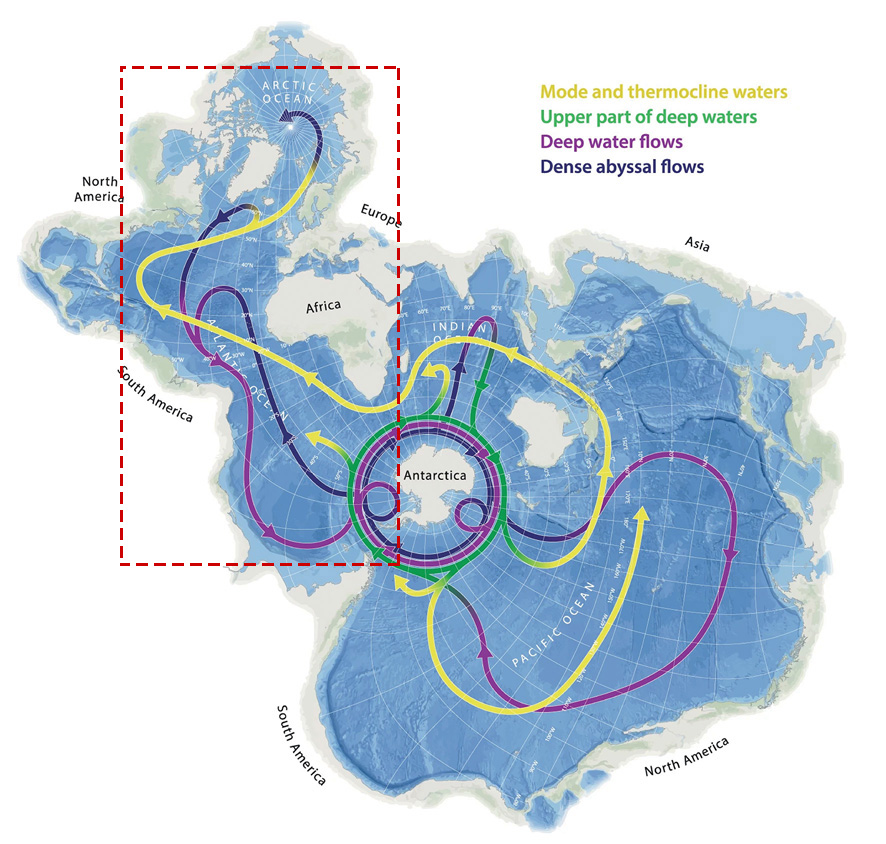SPOTLIGHT TOPIC
What is the AMOC?
The Atlantic meridional overturning circulation (AMOC) is a system of ocean currents that moves water around the Atlantic Ocean, transporting warm water north and cold water south. The AMOC is part of a worldwide network of major ocean currents driven by changes in salinity and ocean temperature - a process called thermohaline circulation.


